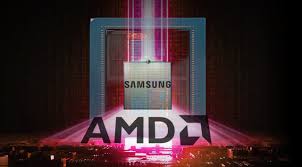The advent of 5G technology represents a transformative shift in the mobile communications landscape, promising to enhance the speed, capacity, and functionality of mobile devices. With its potential to deliver faster data rates, lower latency, and improved connectivity, 5G is set to revolutionize the way we use mobile devices and interact with digital services. Here’s an in-depth look at the impact of 5G on mobile devices, including the technological advancements, benefits, and challenges associated with this next-generation network.
1. Enhanced Performance and Speed
One of the most significant impacts of 5G on mobile devices is the substantial improvement in performance and speed. 5G networks are designed to offer significantly higher data transfer rates compared to their predecessors.
1.1. Faster Data Speeds
5G networks are capable of delivering data speeds that are up to 100 times faster than 4G LTE. This is achieved through the use of advanced technologies such as millimeter waves, massive MIMO (multiple input, multiple output), and beamforming. With 5G, users can experience download speeds exceeding 1 Gbps and upload speeds that are similarly enhanced, enabling quick access to high-definition content, seamless video streaming, and faster file transfers.
1.2. Low Latency
Latency, or the time it takes for data to travel from one point to another, is significantly reduced with 5G. 5G networks promise latency as low as 1 millisecond, compared to the 30-50 milliseconds typical of 4G networks. This ultra-low latency is crucial for applications requiring real-time responsiveness, such as augmented reality (AR), virtual reality (VR), and online gaming, providing users with a more immersive and interactive experience.
2. Improved Connectivity and Network Efficiency
5G technology enhances connectivity and network efficiency, addressing some of the limitations of previous generations.
2.1. Increased Device Density
5G networks are designed to handle a higher density of connected devices, supporting up to 1 million devices per square kilometer. This is particularly beneficial in densely populated urban areas and high-traffic environments, such as stadiums and airports, where a large number of devices are connected simultaneously. The increased capacity ensures that users experience consistent and reliable connectivity, even in crowded locations.
2.2. Enhanced Network Efficiency
5G introduces network slicing, a technology that allows operators to create multiple virtual networks within a single physical 5G network. Each network slice can be customized to meet specific requirements for different types of applications, such as high-speed internet, IoT (Internet of Things) connectivity, or low-latency applications. This efficient use of network resources improves overall network performance and service quality.
3. New Use Cases and Applications
The enhanced capabilities of 5G open the door to new use cases and applications that were previously limited by the constraints of 4G technology.
3.1. Augmented and Virtual Reality
5G’s low latency and high data speeds are crucial for the development and adoption of AR and VR technologies. For example, AR applications can overlay digital information onto the physical world in real time, while VR creates fully immersive virtual environments. With 5G, these technologies can deliver higher-resolution graphics, smoother interactions, and more responsive experiences, making them more practical for entertainment, education, and training.
3.2. Smart Cities and IoT
5G supports the proliferation of IoT devices, which are essential for the development of smart cities. The increased device density and network efficiency enable the deployment of a wide range of connected sensors and devices that can monitor and manage urban infrastructure, such as traffic lights, waste management systems, and energy grids. This connectivity allows for real-time data collection and analysis, leading to more efficient city management and improved quality of life for residents.
3.3. Enhanced Mobile Gaming
The gaming industry benefits significantly from 5G’s low latency and high speeds. Mobile gaming experiences are enhanced with faster load times, smoother gameplay, and the ability to support more complex and graphically intensive games. Additionally, cloud gaming services, which stream games from remote servers, become more viable with 5G, allowing users to play high-quality games on lower-end devices without the need for powerful hardware.
4. Challenges and Considerations
While 5G offers numerous benefits, there are also challenges and considerations that need to be addressed.
4.1. Infrastructure and Deployment
The deployment of 5G infrastructure requires substantial investment in new equipment and technology, including the installation of additional base stations and antennas. The use of higher frequency millimeter waves also necessitates a denser network of small cells to ensure coverage and reliability. This can be a significant logistical and financial challenge for network operators and may impact the speed of 5G rollout in some areas.
4.2. Privacy and Security
The increased connectivity and data transfer capabilities of 5G raise concerns about privacy and security. With more devices connected to the network, the potential attack surface for cyber threats expands. Ensuring robust security measures and protocols to protect user data and network integrity is critical as 5G technology becomes more widely adopted.
4. 3. Device Compatibility and Costs
The transition to 5G requires compatible devices, which can be costly. While 5G smartphones and other devices are becoming more available, they often come at a premium price compared to their 4G counterparts. Additionally, ensuring that users have access to 5G networks and services in their area is essential for realizing the full benefits of the technology.
5. Future Outlook
The future of 5G holds promise for continued innovation and advancement in mobile technology. Key areas of focus include:
- 6G Development: Research into 6G technology, the successor to 5G, is already underway. 6G is expected to offer even faster speeds, lower latency, and new capabilities, further enhancing the possibilities for mobile devices and applications.
- Integration with Emerging Technologies: 5G will continue to integrate with emerging technologies such as AI (artificial intelligence) and edge computing, enabling more intelligent and responsive applications and services.
- Global Adoption: As 5G infrastructure expands globally, efforts to ensure equitable access to the technology will be crucial for addressing digital divides and promoting widespread benefits.
Conclusion
The impact of 5G on mobile devices is profound, offering significant improvements in speed, connectivity, and functionality. As 5G technology continues to evolve, it will drive innovation across a wide range of applications, from enhanced mobile gaming to smart cities and beyond. While challenges remain, the potential benefits of 5G make it a key driver of future advancements in mobile technology and digital experiences.

